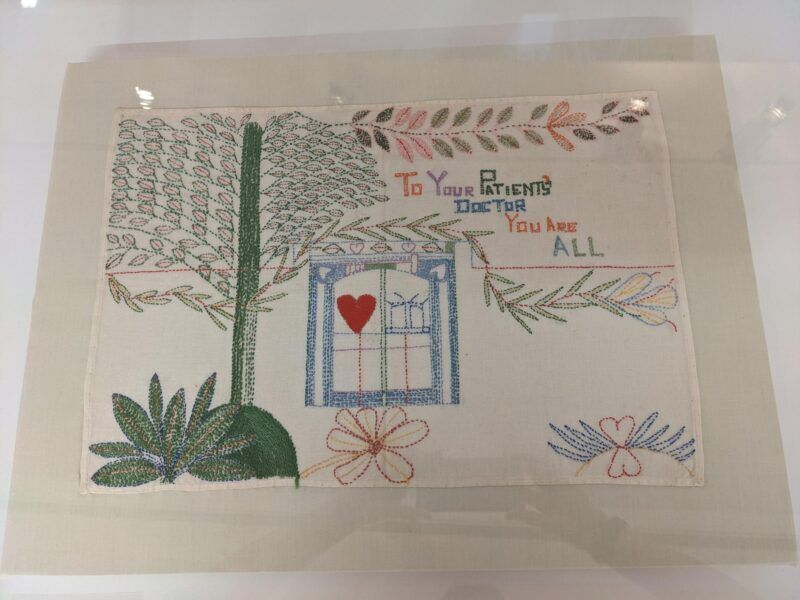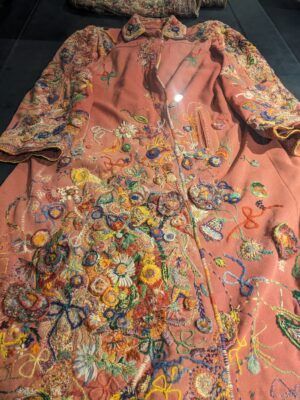We are always interested in how other countries think about and deliver creative opportunities for people with mental health problems and in April, I had the pleasure of visiting two projects in Melbourne.
My first stop was the Dax Centre in Melbourne, one of only a few historic collections of art by mental health patients in the world.
Last year, we visited a similar collection, the Prinzhorn Collection in Heidelberg, Germany. The closest perhaps in the UK is the Bethlem Museum of the Mind which hosts a collection of art, archives and historic objects associated with the venerable Bethlem Royal Hospital, alongside the Bethlem Gallery, with its extensive programme of creative programmes and exhibitions engaging patients and the public around the topic of mental health.
Similar to the Prinzhorn, the Dax Centre’s collection was founded by a psychiatrist, in this case Dr Eric Cunningham Dax, who salvaged patient art from a Victorian state mental hospital as it closed, even diving into skips to rescue it. (Times and ethics change and it was interesting to hear from curators, Emily Winslade, Gallery Coordinator, and Eliza Murley, Gallery Manager, how the Centre has gone through the collection to check whether the artists in the original collection are still happy to be included, a massive but important job.)
Today they have 16,000 art works in the collection, archival documents (such as historical medical notes) and a newer poetry collection. The collection today extends to experience of trauma, including the Holocaust, abuse and natural disasters such as bushfires. They get several enquiries a week from people who want to donate – domestic and international. The current exhibition includes items donated by an art therapy unit in Hong Kong.
Interestingly, the Dax Centre since 2018 has been a subsidiary of the Australian mental health charity, SANE, which provides online mental health support and campaigns against mental health stigma. Again the closest parallel in the UK is probably the Mental Health Foundation Scotland which supports the long-running arts and mental health festival, SMAHF. SANE supports Dax with business services such as HR and a budget for exhibitions – they fundraise for grants for further support.

Dax’s mission aligns well with SANE’s, focusing on better understanding of mental health and the reduction of stigma. Through their gallery space, they provide opportunities for contemporary artists with lived experience of mental health problems to exhibit work and develop their practice and they also have an education programme for secondary and university students.

When I visited there were two exhibitions – She Who Persists explored how women have used and use textiles to manage their mental health. It included some astonishing embroidery by Edith Agnes Harrington (picture left) who spent most of her life in an institution embroidering garments that people brought her. A small exhibition showed work by young artist, Frances Cannon.
Next up and starting in May is a collaboration between RMIT University art graduates and the Centre, with 12 artists successfully submitting applications to present their work in response to a piece in the collection.
My second Melbourne pitstop was the Australian National Veterans Art Museum, discovered serendipitously as I walked from the Royal Botanic Gardens to the National Gallery of Victoria (currently, appropriately also, showing a huge exhibition by Yayoi Kusama). The mission of the Museum – ANVAM – is to promote the arts across the veteran community and to enhance the physical and mental health of veterans through the arts. The team there had just finished delivering their second Festival of Veteran Arts, with a mix of public events, exclusive workshops for veterans and families, and performances.
We are slowly discovering more about how other countries deliver creative opportunities for people with mental health problems, including through the visual arts. We’ll be including some of these in a new report we have coming out in the summer – Creatively Minded and in the Studio, which will provide some international examples alongside a bigger exploration of the UK. Watch this space!
And finally last year, we supported the Imperial War Museum in London to collaborate with the veterans’ arts organisation, Soldiers Arts Academy, to write a song together and perform at the opening of the museum’s major exhibition, War and the Mind. You can also read a bit more about veterans’ arts in the context of trauma in this blog we published in 2021.